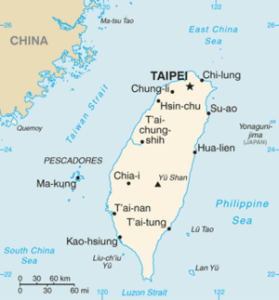 My introduction to Taipei in late May to early June of 2016 was memorable in part because I sang in a karaoke taxi in that city — thereby making Taiwan the 41st country on my World Karaoke Tour. But I wasn’t only there to sing. A city of some 2.7 million inhabitants — the capital and largest city of the island nation of Taiwan — beckoned me to explore it!
My introduction to Taipei in late May to early June of 2016 was memorable in part because I sang in a karaoke taxi in that city — thereby making Taiwan the 41st country on my World Karaoke Tour. But I wasn’t only there to sing. A city of some 2.7 million inhabitants — the capital and largest city of the island nation of Taiwan — beckoned me to explore it!
My sojourn in Taipei came in the midst of a vacation during which I checked off two bucket list items (the Great Wall of China, and the Terracotta Army in the Chinese city of Xi’an), and which culminated in my tour of North Korea, a country rarely visited by Westerners. It would have been easy for Taipei to be overshadowed by such high-profile destinations. Nevertheless, Taipei left just as much of an impression on me as any of my other stops in East Asia this past spring. Moreover, as you’ll see, my visit to Taipei lasted slightly longer than planned, although the circumstances that extended my time on Taiwanese soil weren’t necessarily a positive highlight. 🙂
Taipei 101: a skyscraper like no other
As an architecture geek who’s enamoured of supertall skyscrapers (“supertall” being a classification that applies to edifices at least 300 metres, or 984 feet, in height), one attraction that I particularly looked forward to checking out while in town was the Taipei 101 building. Indeed, I even chose a hotel across the street from it. Taipei 101 didn’t let me down.
Getting to know the building
Opened to the public on the last day of 2004, Taipei 101 stands 1,474 feet tall at its roof, and 1,671 feet tall at the tip of its spire. From the time of its completion until 2009, it was the tallest building in the world; that title was wrested from it by the Burj Khalifa in Dubai, which I’ll be seeing in person in early 2017. 🙂 As for Taipei 101, its distinctive profile has been likened to a series of Chinese food takeaway boxes, piled one on top of another; it’s also evocative of multiple levels of that most traditional of Asian architectural genres, the pagoda. Further contributing to its unique appearance is its green hue. Incidentally, its name derives rather prosaically from the fact that it rises 101 floors above ground. (It also has five subterranean levels, which house a parking garage.)
My very first first daytime activity after arriving in Taipei was an ascension to Taipei 101’s observatories. It boasts indoor observation decks on the 88th and 89th floors, and an outdoor observation platform on the 91st floor. That outdoor observatory encircles the building at an altitude of 1,285 feet — the second-highest alfresco viewing platform of any skyscraper in the world.
Descending a couple of flights of stairs from the observatory brings you to the tuned mass damper (TMD), alternatively known as a harmonic absorber, which helps to maintain the building’s stability during heavy winds or seismic activity. (Regarding that latter risk, Taiwan sits astride the Ring of Fire, and earthquakes are an ever-present threat in Taipei as on the rest of the island. One of Taiwan’s 42 active faults passes just 660 feet from Taipei 101.)
By the way, who says engineering can’t be fun? The TMD in Taipei 101 even has its own mascot, named “Damper Baby.” And bonus: that mascot, of which there are four versions with differing colour schemes, was designed by Sanrio — the same Japanese company that brought Hello Kitty to the world! (Speaking of Hello Kitty, you haven’t heard the last of her in this blog post. 🙂 ) Damper Baby has taken on a life of its own; it stars in a comic book, and figurines of the various versions of the mascot are popular souvenirs.
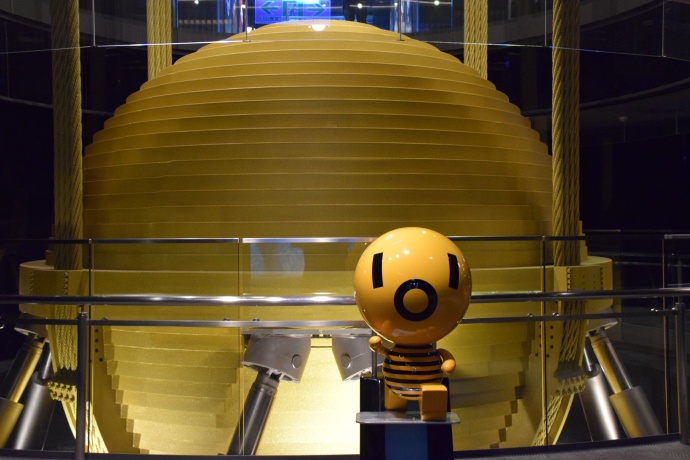
Putting a damper on things: this is Taipei 101’s tuned mass damper, with its mascot, the “Damper Baby,” in front of it.
In my opinion, as is the case with many skyscrapers, the views of Taipei 101 that you can behold from various points in the city are far superior to the views from its observation deck. Let’s turn now to a place where I went to seek out breathtaking views of Taipei 101.
I’ll never forget Elephant Mountain
When I asked the concierge staff at my hotel to direct me to the best vantage point for gazing upon Taipei 101 against the backdrop of the surrounding skyline, they directed me to a hill called Elephant Mountain. To reach the viewing areas upon that hill requires ascending a series of staircases that are quite steep at times. Naturally, I was intent on reaching the very highest of the scenic overlooks, despite the forbidding slopes of the stairways.
Note also that earlier during the day on which I summited Elephant Mountain, the temperature in Taipei had soared to a sweltering 101.7 degrees Fahrenheit — with high levels of humidity. At the time when I commenced my hike up the hill, at about 6:00 pm, it was still quite hot and muggy in the city. So a climb that would have been challenging under any circumstances was even more physically demanding than it would normally have been. But I carried two bottles of water with me; and although my supply of H2O added considerable weight to my daypack, I managed to remain hydrated and avoided succumbing to hazards such as heatstroke.
Despite the grueling and arduous nature of scaling Elephant Mountain, the view from the top made the trek worthwhile:
As you can see, I never got tired of staring at Taipei 101. That green giant is now tied with New York City’s Chrysler Building for the honour of being my favourite skyscraper on the planet. I should mention that I’m not alone in feeling this way; in 2015, the BBC named Taipei 101 to its list of the 8 most beautiful skyscrapers in the world. (For what it’s worth, the Chrysler Building was also included on that list.)
Visiting shrines to two of the Republic of China’s seminal leaders
Taiwan, officially named the Republic of China (although this blog post uses the two monikers interchangeably), is governed separately from the Chinese mainland. 21 other countries maintain diplomatic relations with it. However, China claims sovereignty over Taiwan; and Taiwan itself has not formally declared independence (and the Taiwanese people are split on whether they should do so). According to BBC News, “Taiwan is an island which has for all practical purposes been independent since 1950, but which China regards as a rebel region that must be reunited with the mainland – by force if necessary.” Moreover, the United Nations, under pressure from the Chinese regime, has declined to admit Taiwan as a member state. In short, the geopolitics of Taiwan are contentious and unresolved, reflecting that the recent history of the island is intertwined with that of the Chinese mainland. (I’ll admit, though, that I made an executive decision to count Taiwan separately from China for purposes of tallying the number of countries in which I’ve sung on my World Karaoke Tour. 🙂 )
A brief and probably oversimplified summary of the relevant history: in 1912 a revolution overthrew the Qing dynasty (also known as the Manchu dynasty), the last imperial dynasty of China. Following that revolution, mainland China was known as the Republic of China from 1912 through 1949; and it was governed by a party called the Kuomintang (KMT). In 1945, the Republic of China annexed Taiwan, which had been a colony of Japan for the previous 50 years. In 1949, the Communist party led by Mao Zedong took over mainland China, renaming it the People’s Republic of China (PRC). For several more decades, the KMT continued to hold sway over Taiwan (which retained the name of the Republic of China), ruling it as a one-party state as under martial law. However, in the late 1980s the KMT permitted additional political parties in Taiwan, and beginning in 1996, Taiwan has held democratic Presidential elections. Today, the KMT is one of several major political parties in Taiwan.
National monuments erected in Taipei in recent decades pay tribute to a pair of individuals who played prominent roles in both mainland China and Taiwan in the 20th century.
National Chiang Kai-shek Memorial Hall
During most of the period from 1928 to 1975, the Republic of China was led by Chiang Kai-shek (CKS), who in that capacity held several different titles. He was also a long-time Director-General of the KMT.
CKS is honoured in Taipei with an eponymous National Chiang Kai-Shek Memorial Hall, which contains a bronze statue of him seated in a chair. Soldiers stand sentinel in front of the statue, and a changing of the guard occurs hourly. The Memorial Hall, completed in 1980, is part of a cultural complex that also includes the National Theater and National Concert Hall.
The following video that I created shows excerpts from the changing of the guard ceremony in CKS’s memorial hall.
Sun Yat-sen Memorial Hall
In addition to venerating CKS, Taipei has a hall keeping alive the memory of his predecessor, Sun Yat-sen (SYS). The founding father and first President of the Republic of China, SYS also was a key figure in the 1912 revolution on the Chinese mainland, and has been dubbed the “forerunner of democratic revolution in the [PRC].”
SYS’s memorial hall was completed in 1972. Like the corresponding one for CKS, its focal point is a bronze statue of its namesake in a seated pose.
In SYS’s hall, as in CKS’s, I was witness to a changing of the guard. This time, instead of shooting video, I snapped a bunch of still photos of the ceremony. Here are a few of them:
Surrounding the Sun Yat-sen Memorial Hall are several gardens. In one of them is a statue of Yu Youren, an educator who played a role in the revolution that led to the formation of the Republic of China in 1912. Dr. Youren was also a master calligrapher.
There’s also a picturesque Chinese-style garden, featuring a pond with nice views of Taipei 101.
Nĭ hăo, kitty: the ubiquity of a certain mouthless feline in Taiwan
Although Hello Kitty originated in Japan, the whimsical, semi-anthropomorphized white feline is quite popular in Taiwan. For example, in the town of Kaohsiung, a hotel offers the option of lodging in a guestroom decorated with a Hello Kitty theme. I didn’t make it to Kaohsiung, which is about 185 miles southwest of Taipei as the crow flies; but I received ample exposure to Hello Kitty in Taipei.
The Hello Kittiest restaurant ever
Yes, there’s a Hello Kitty-themed cafe in Taipei. I’m not ashamed to admit that I dined at Hello Kitty Kitchen and Dining, even if they don’t serve up haute cuisine there. Here are some glimpses of what that eatery looks like, both outside and inside:
When it came time to order, I actually chose my entree based on which picture in the menu featured the most items that looked like Hello Kitty. 🙂 That turned out to be some dish involving pork.
Even the beverages adhere to the restaurant’s theme:
I can’t say that my meal at Hello Kitty Kitchen and Dining was particuarly savoury (although the chocolate smoothie tasted quite good). But the experience value was more important to me than the food. 🙂 For those desiring a more hoity-toity dining atmosphere, I learned while researching this blog post that there’s at least one additional Hello Kitty-themed restaurant in Taipei; in July 2015, a hot pot restaurant called Hello Kitty Shabu-Shabu opened in the city. I know where I’ll be eating the next time I’m in town. 🙂
Hello Kitty at the airport
Another bonanza for Hello Kitty fans is Taipei’s Taoyuan International Airport. Indeed, the fleet of EVA Air, a major Taiwan-based carrier, includes multiple aircraft that are painted in Hello Kitty livery and outfitted with Hello Kitty decor in their cabins. I caught sight of one of those planes, a Boeing 737, parked at the gate:
Sadly, I didn’t get the opportunity to peek inside this plane. Maybe next time. 🙂
The airport itself features a Hello Kitty-themed self-service check-in area for EVA Air, and even a waiting lounge replete with Hello Kitty imagery.
You may notice that in the background of the photo of the waiting lounge, a store (which happens to be a shop specialising in Hello Kitty merchandise) is darkened. This is due to the fact that during the time when the photo was taken, when I was waiting to fly from Taipei to Beijing, the airport was afflicted with a partial power failure. More on that later. 🙂
Sipping Taiwan’s bubbly beverage sensation
Not all of my food and drink experiences in Taipei were Hello Kitty-related. 🙂 For example:
It’s probably fair to say that bubble tea, also known as pearl milk tea, is an unofficial national beverage of Taiwan. My experience, at least in Taipei, was that you can find this form of liquid refreshment just about anywhere. The defining characteristic of bubble tea, and the source of its name, is the tiny black spheres (or “bubbles”) of tapioca that you’ll find at the bottom of the drinking receptacle. (The liquid portion consists of black or green tea mixed with milk or fruit.) An added benefit of bubble tea is that it’s highly caffeinated. Anyway, although I’d previously had bubble tea in my home city of New York, I understandably wished to sample some in Taiwan, the land where it was invented in the 1980s. I went to an establishment that specialises in it, which was recommended to me by the staff at my hotel. This is what my glass of bubble tea looked like:
Now that I’m back in New York, I feel grateful that I can always find bubble tea here when I have a craving for it.
Cheap but oh-so-delish victuals at the night market
One of the pleasures in many Asian cities is strolling a night market — a permanent setup that typically covers several square blocks and consists of stalls offering street food, lined on either side by more permanent restaurants as well as various shops. The streets that house night markets are usually pedestrian-only, with the exception of the occasional motorcycle that zips through them; so one must be aware and alert when ambling along those streets on foot.
Taipei boasts a plethora of these night markets; this site enumerates an astonishing 31 of them, which provides an indication of how embedded these after-dark emporiums are in Taiwan’s culture. I strolled through one called Tonghua, which was nearby to my hotel. If I get back to Taipei, I would like to try one or more of its other night markets, such as Shilin (the largest, which dates all the way back to 1899) or Raohe (also one of the oldest). In the meantime, I can share with you what Tonghua was like.
My favourite single item that I consumed at the Tonghua night market was a cup of sugar cane juice.
In addition, I quite enjoyed the spicy fried tofu that I acquired from another kiosk, not pictured here. Below are a few further highlights from the Tonghua night market:
My foray to the night market came on my last night in Taipei. The next day, the time came for me to head to the airport to leave Taiwan. Those travels didn’t go smoothly
Departing from Taipei’s airport: hey, who turned out the lights?
On Thursday, June 2 I was scheduled to depart from Taipei’s Taoyuan International Airport for a flight to Beijing — from where, just two days later, I’d be proceeding to North Korea. On the morning of June 2, after the torrid, record-setting temperatures of the previous day, severe thunderstorms cooled off Taipei. One of those storms knocked out the power in a portion of one of the terminals of the airport — specifically, the terminal at which my flight to Beijing would be boarding.
A long day at the airport for me
Due to the loss of electricity, as I made my way towards my gate I was treated to the unusual sight of airport shops darkened in the middle of the afternoon:
The lack of juice also contributed to delays of numerous flights at the airport — including mine. When I reached my gate, I was told that although my plane was present and ready to take on passengers, it couldn’t be boarded because the door to the jetway could only be opened electronically; and it was not possible to manually override that system to unlock the door. Without entering the jetway, it wasn’t possible for anyone to access the plane. Thus it was that, for the first time in my travelling career, I experienced a flight delay caused by a power failure.
From there, things only got worse. Even when the jetway was finally unlocked, the crew hadn’t yet arrived at the airport; the morning storm had caused flooding that led to massive traffic jams near the airport. Then, shortly after the crew showed up, the airline’s gate staff announced that our flight would be moved to a new gate, because a different flight needed the gate that we were currently occupying. Why we had to move, and why the other plane couldn’t be the one re-assigned to a different gate, is a mystery that was never explained.
We were actually relocated to a group of four gates adjacent to each other — and all of which already had other airplanes parked at them. Which meant that my plane had to park on the tarmac, and it would be a long time before there would be an opening for it to pull up to one of the gates. Then, further exacerbating the situation, the gate agents lost contact with the flight crew of my plane. Needless to say, a plane can’t be flown without a flight crew. 🙂 Additional delay ensued. Keep in mind that due to the partial loss of electricity, the air conditioning in the terminal was inoperative — and that while the morning thunderstorm had cooled things off considerably, the temperatures in Taipei had been furnace-like just a day earlier. The end result: in both of the gate areas in which I’d been waiting out my flight delay, there was a lot of sweating going on.
Eventually my plane’s flight crew was located; and buses were sent to ferry my fellow passengers and me to our aircraft, which was still out on the tarmac. By the time all of this had concluded and the full roster of passengers was seated aboard the aircraft, it was far later than our original departure time. We started taxiing approximately four-and-one-half hours after the scheduled departure time of my flight — making China Airlines flight 517 the most delayed airline flight I’ve ever experienced. It’s a new personal record! While the schedule had called for us to arrive at Beijing Capital International Airport at 6:50 p.m., we actually landed after 11:00 p.m.
And my troubles still weren’t over.
Where’s H-Bomb’s luggage?
After a fairly long period of standing at the baggage carousel in Beijing, I learned that China Airlines had forgotten to load my suitcase — or the luggage of any of the other passengers on my flight — onto the plane. As a result of this mind-boggling oversight, everyone’s luggage was stranded in Taipei. I filled out a form in the baggage claim office, and was promised that my baggage would fly to Beijing the next morning and be delivered to my Beijing hotel in the afternoon.
The next day, as morning turned to afternoon and my luggage failed to turn up at my hotel, I grew increasingly nervous. Because now my departure for the next country on my itinerary — North Korea, which is not exactly known as a shopper’s paradise — was less than 24 hours away. As it happened, my hotel in Beijing was next door to a shopping mall. If necessary, I could go on a shopping spree to that mall in the evening, and purchase several days’ worth of clothing as well as a replacement suitcase in which to transport that clothing. Then I might have to fight with the airline for reimbursement of the expenses incurred in making such purchases.
Meanwhile, employees at the concierge desk of my hotel were periodically attempting to telephone the baggage claim office to ask about the status of my suitcase — only to be perpetually met with a busy signal. Yes, it’s possible for a telephone call to still elicit a busy signal in 2016. 🙂
Miraculously, at about 6:30 pm, the on-duty concierge managed to make telephonic contact with a human being at the Beijing Capital International Airport baggage claim office. However, there came a time during that phone convo when the baggage claim agent, after indicating that my suitcase had arrived in Beijing, placed the concierge on hold to look into its status and location. After being on hold for a while, the concierge inexplicably hung up. Predictably, when he redialed the number for the claims office, he was unable to get through again; nor did that office call him back.
At that point, I decided to take matters into my own hands, jumping in a taxi to the airport. After the rare experience of going backwards through customs to reach the baggage carousel area, I marched into the baggage claim office. A person inside led me to a different office — and wouldn’t you know it, my suitcase (which was supposed to have been delivered to my hotel hours earlier) was still there! Well, at least my worrying was over and I’d been reunited with my possessions. And I would have stuff to wear in North Korea.
Overall, Taipei exerted quite a hold on me. I just wish it hadn’t been so hesitant to let me — or my luggage — go. 🙂 I enjoyed the city, though, and I hope for the opportunity to spend more time there and experience even more of its charms.

This Robert Indiana “LOVE” sculpture — one of numerous identical sculptures in various cities around the world — is installed next to the base of Taipei 101. I’ve seen others in New York, Philadelphia, Montreal, and Tokyo.
Would you like to visit Taipei?
Click here to follow me on Twitter! And click here to follow me on instagram!

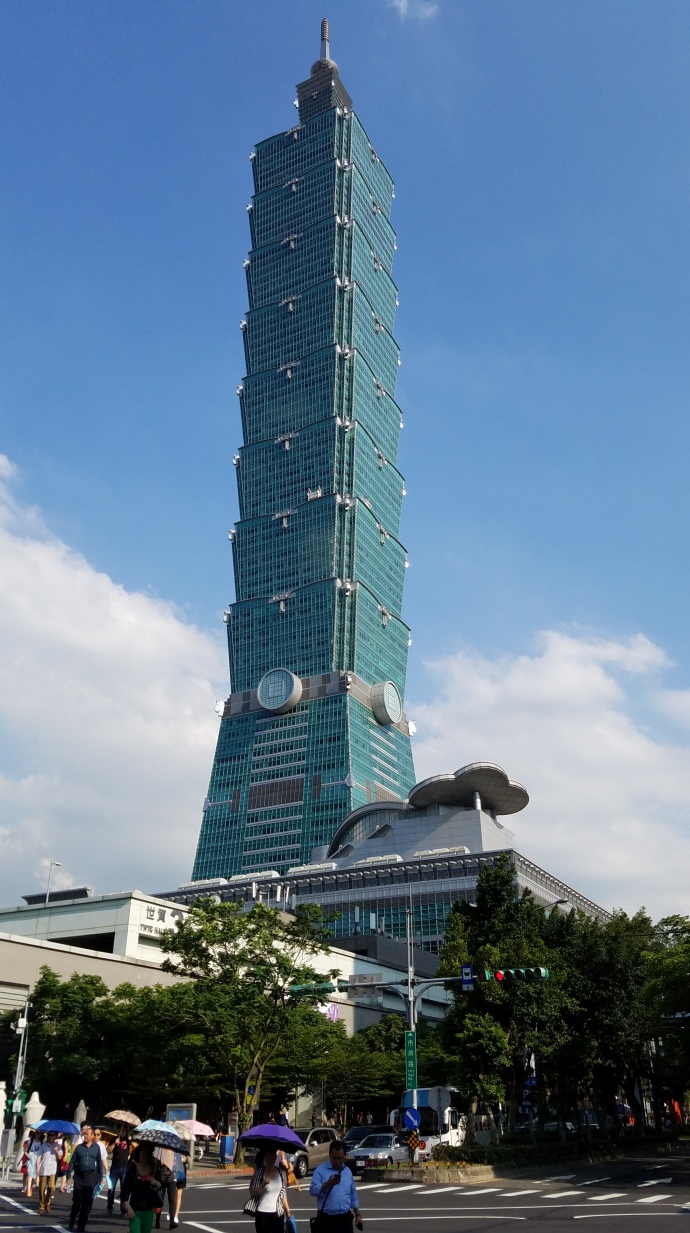
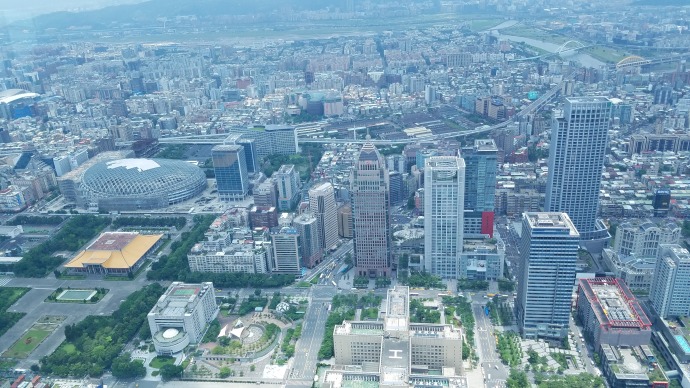
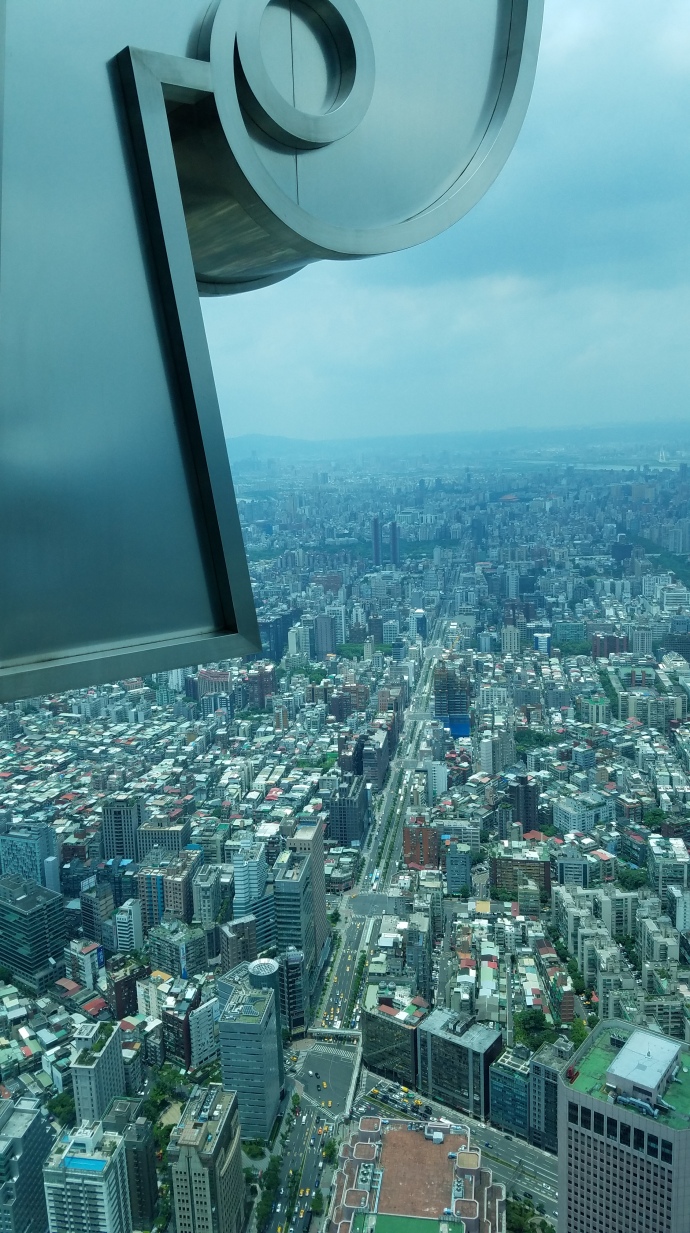
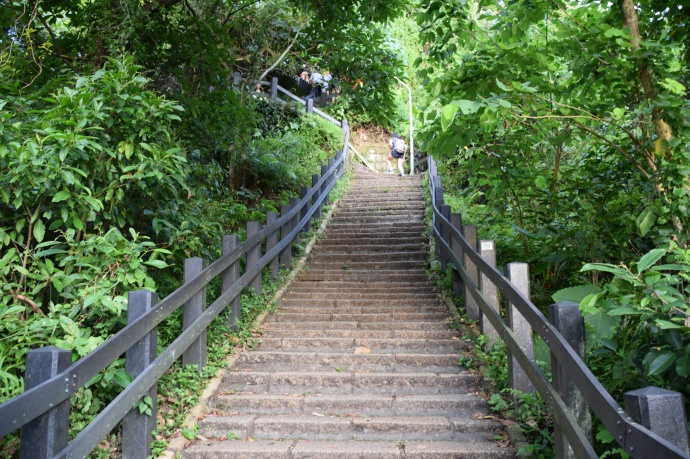





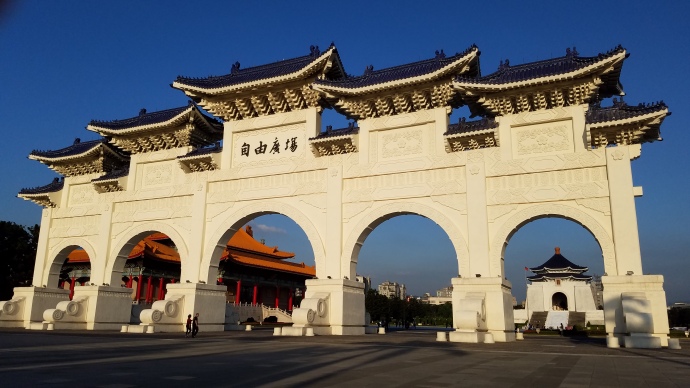
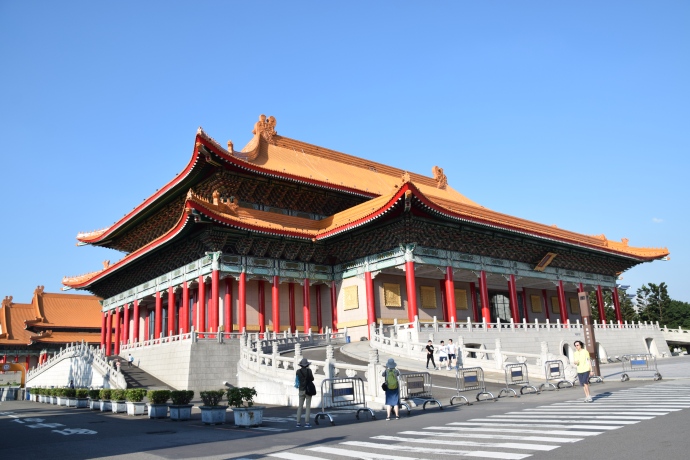
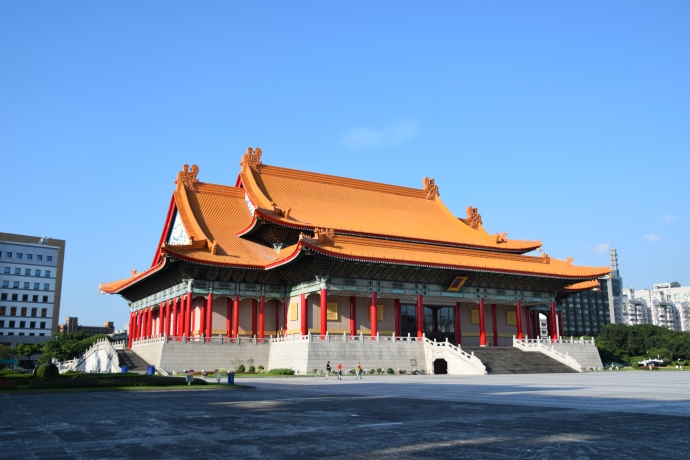
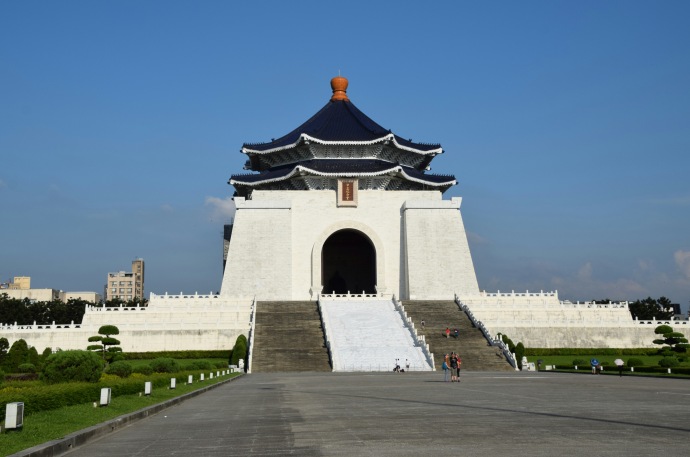
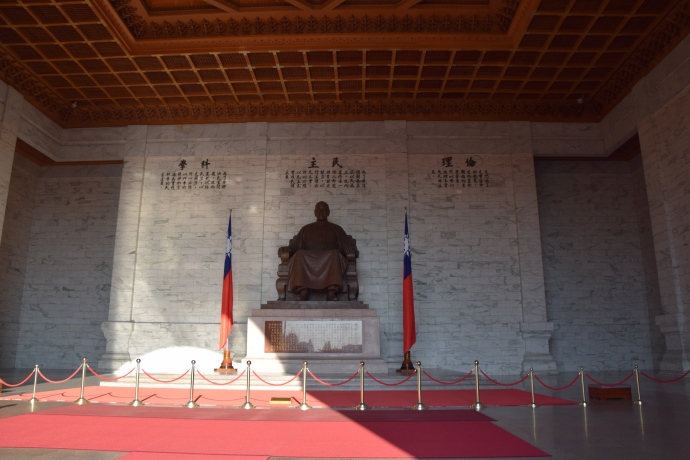
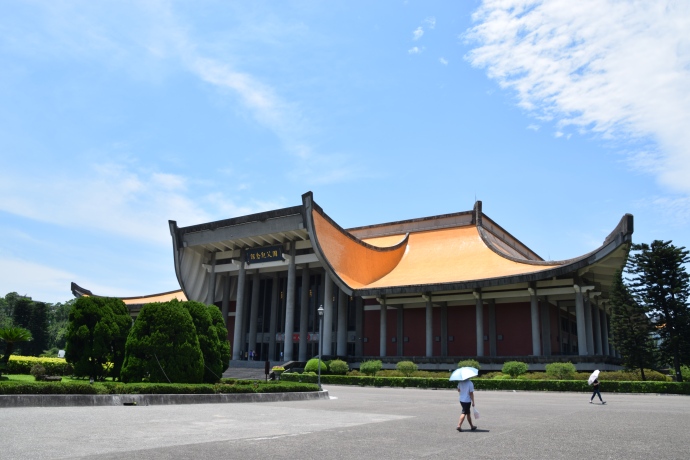

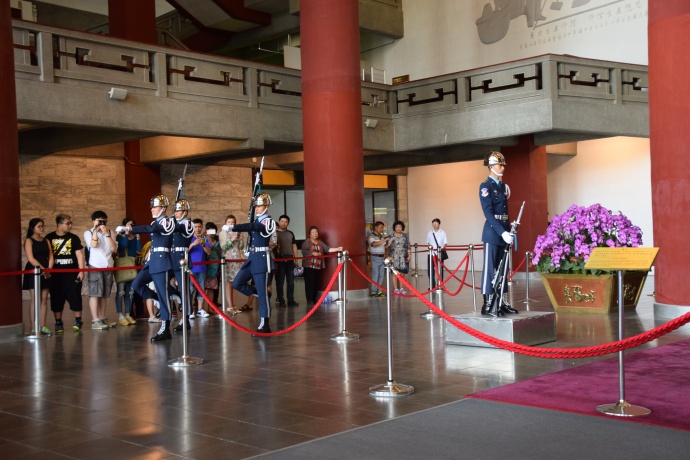
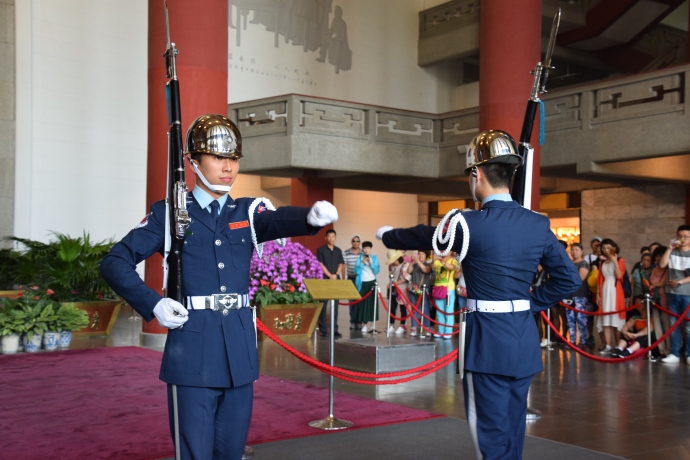


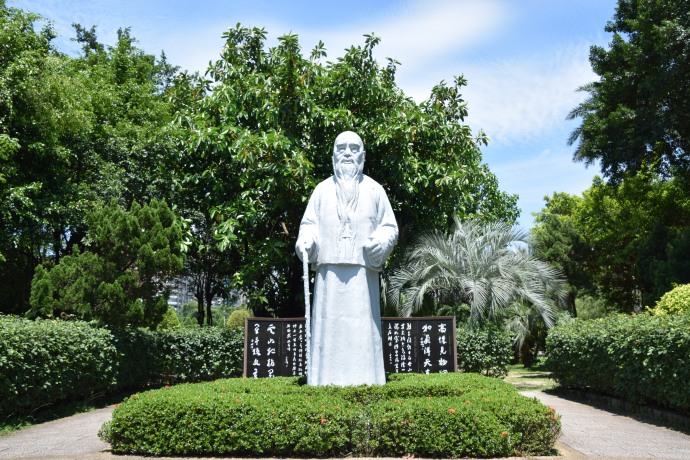




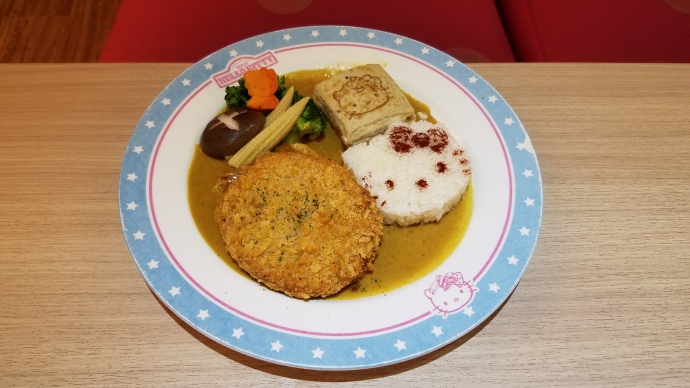

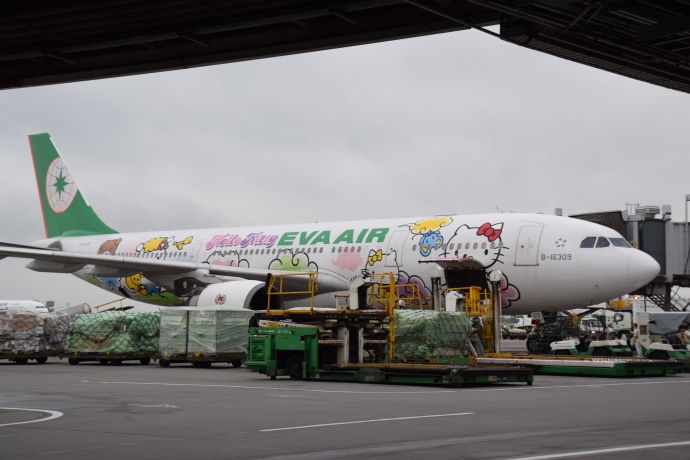
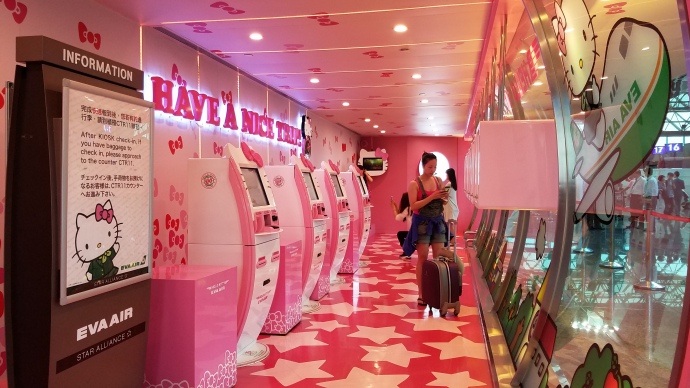
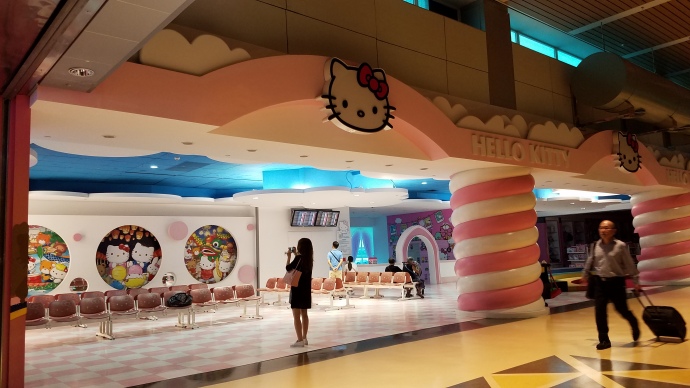








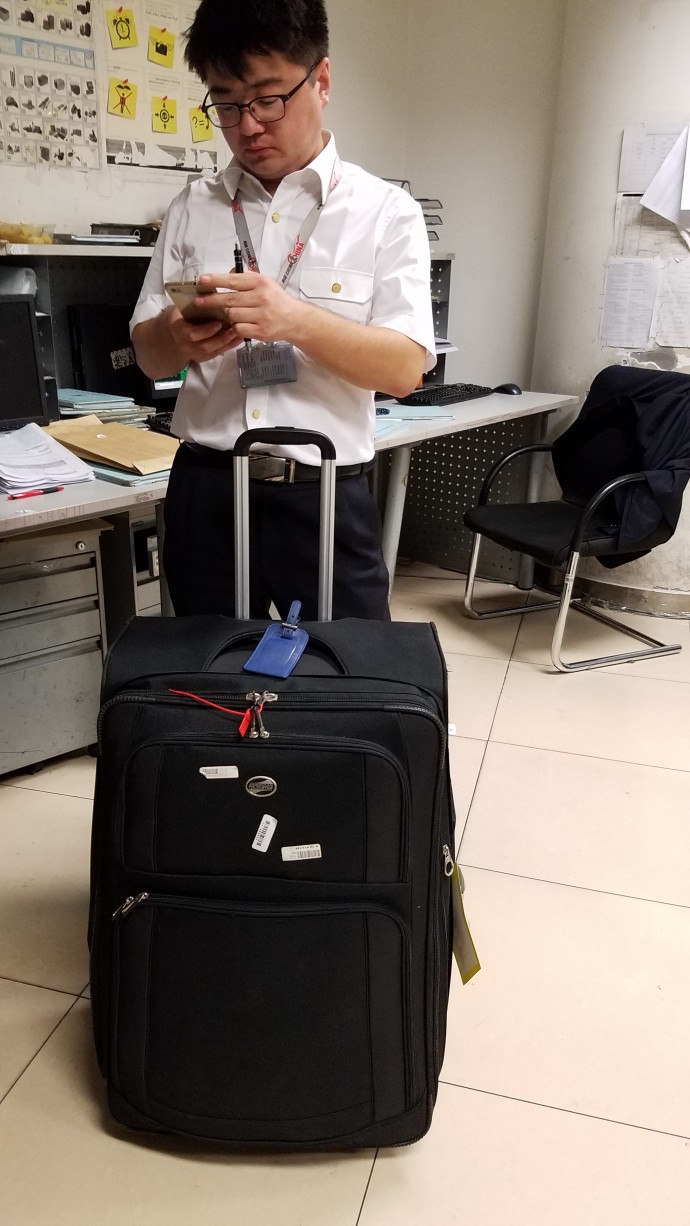



That Taipei 101 skyscraper is really amazing. I would never say it is possible to create such design 🙂
LikeLiked by 1 person
@Julius: Ever since Taipei 101 was built I’ve been a fan, but seeing it in person made me truly appreciate it. It’s possibly the most unique-looking of all the supertall skyscrapers (although the Petronas Towers in Kuala Lumpur are also quite distinctive, as is the somewhat shorter Burj Al Arab in Dubai). Taipei 101 is also a lot of fun to go inside.
LikeLike
I am so glad you got your luggage back after all that! (extra kudos for being so proactive, as most of us would have considered it gone forever) The Taipei 101 is impressive, being from Canada, most of our “skyscrapers” are those little guys it looks down on. Great post!
LikeLiked by 1 person
@Amy: I’m glad I got my luggage back too. 🙂 I’m sure anyone in my position would have been equally persistent, though especially if faced with the prospect of continuing on to another country without their belongings. 🙂
One thing that I think makes Taipei 101 even more impressive is that it’s so much taller than anything else in the city. It’s literally more than twice as high as any other building in Taipei. So it totally dominates the skyline in a way that’s not true of many other cities’ highest skyscrapers.
LikeLike
Congrats on your 41st karaoke country! We’ve wanted to go to Taiwan for a while as our friend lives there, but this blog post has convinced us we must go there!! Love that hello kitty cafe!
LikeLiked by 1 person
@Laura: Thanks. Actually I’m up to 42 karaoke countries, as I sang in North Korea later on during the same trip. 🙂 (I just haven’t gotten around to writing about that experience yet.)
I’m glad you want to go to Taiwan now. Admittedly, Taipei is just one city there, and I would like to see more of the island, but if my experience in Taipei is any indication you’ll have a great time in Taiwan. And that will be true whether or not you go to Hello Kitty Kitchen and Dining (or the more upscale Hello Kitty hot pot restaurant). 🙂
LikeLike
I’ve been to Taiwan nine times and I think it’s one of the most underrated countries. It’s clean, modern, friendly, not very expensive, and has great food.
And congrats for successfuly tackling the geopolitics of the place in your post.
LikeLiked by 1 person
@Tom: Wow, nine times! I’m impressed. I agree that Taiwan is underrated. Often when people are visiting mainland China they don’t even consider adding nearby areas like Taiwan — and when they do, they’re more likely to consider Hong Kong (which admittedly is a beautiful city).
I also agree that Taiwan has great food, and there’s a lot more to its dining scene than the Hello Kitty cafe. 🙂
Thanks for the compliment on my treatment of Taiwan’s geopolitics.
LikeLike
Your pictures are stunning. I would love to visit here and I may have to take a trip to the Hello Kitty cafe haha
LikeLiked by 1 person
@Claire: Thanks. And I won’t judge if you go to the Hello Kitty cafe. 🙂
LikeLike
I’d better not show this post to my son’s girlfriend or she will be booking the next flight to Taiwan just to visit the Hello Kitty Cafe!
LikeLiked by 1 person
@Nancy: Your son’s girlfriend has a right to know. 🙂
LikeLike
ha i’ve heard so many crazy stories from friends about taipei 101. i definitely want to check it out next time i’m in taiwan!
Sher
http://www.shershegoes.com
LikeLiked by 1 person
@Sher: The next time you’re in Taiwan? You mean you’ve been there before yet haven’t been to the most iconic building in its largest city? You should definitely check it out. 🙂
LikeLike
Stunning aerial photos, especially the ones from Elephant Mountain!
LikeLiked by 1 person
@Stephanie: Thanks, the view from Elephant Mountain was one of the best views I’ve ever experienced anywhere. I could have taken even better photos if I had a taller tripod which would have given me a better choice of angles. That’s on my list to get before my next major trip. 🙂
LikeLike
Looks an an incredible experience in Taipei! The Hello Kitty obsession is still going strong I see!
LikeLiked by 1 person
@Bohemian Diaries: And in my opinion, as obsessions go, Taiwan’s Hello Kitty one is very healthy. 🙂
LikeLike
travelled asia as a kid, have to say i haven’t felt a strong desire to go back to re-discover the cities to see how they have changed. great captures of taipei and looks like you had a great stay.. food isn’t half bad.. but i have to say, i’m not really into the whole sanrio obsession that asia has.. i didn’t understand it back then and even less so now.
LikeLiked by 1 person
@Renee: Hello Kitty isn’t for everyone. 🙂 But how can you not love that other Sanrio product, Damper Baby? Isn’t he adorbs? 🙂 Anyway, there are plenty of other reasons to visit Taipei and other Asian cities that have nothing to do with Sanrio. 🙂
LikeLike